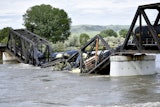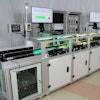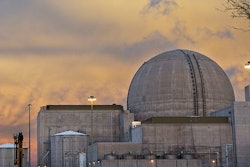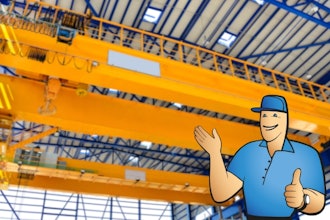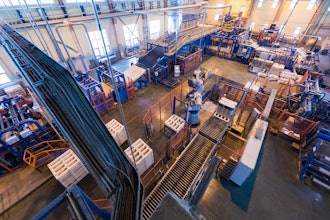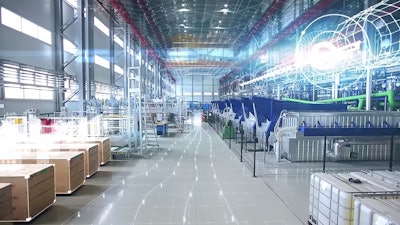
Making the decision to upgrade to LEDs is only half the battle. Once you’ve decided to make the move, you have another decision to make. Should you buy new fixtures or retrofit your existing fixtures to accept LEDs?
Buying new LED fixtures provides you with a whole new lighting system, giving you the opportunity to install as many fixtures as needed — wherever you need them. It also allows industrial plants to correct problems with existing lighting design and layout. An LED retrofit, however, involves replacing existing light sources with LEDs while keeping the fixtures that house the lamps.
As with most decisions, the answer to the question of “new or retrofit?” isn’t black and white. But the good news: You can ask yourself a series of questions that helps narrow in on the right answer based on your budget and specific industrial environment.
Before you decide whether to retrofit or replace your existing fixtures during an LED upgrade, go through this list of questions so you make the right decision.
Are your existing fixtures in good condition?
If your existing fixtures exhibit any of the following signs, then it’s not a good idea to retrofit them to accommodate LEDs. The lamps could ultimately fail, or may not provide the same level of performance you expected when they were installed:
- Cracked or falling apart
- Aren’t the right fixtures for your industrial environment
- Don’t comply with appropriate codes
- Weren’t installed correctly
Before you reuse the existing fixtures, check the housing, wiring, reflectors, trim, and lenses/shades to make sure they’re not damaged in any way. If they’re all in good (and functioning) condition, then LED retrofit kits may be a good choice for your industrial plant.
Do your existing fixtures look the way you want them to?
Although aesthetics aren’t necessarily a high priority in manufacturing plants, a complete lighting system replacement will give you the opportunity to switch out fixtures to match a certain design aesthetic or finish. If this changing the aesthetic of lighting fixtures is on your wish list, then it’s important to know that LED retrofit kits won’t make your fixtures look any different.
Are you satisfied with the current lighting design and layout within the space?
If fixture spacing isn’t correct, if fixtures aren’t directing light to the appropriate places, or if the fixtures are wider than recommended, you may not have an appropriate lighting layout. If there are lots of shadows, harsh patterns, or glare, then your existing lighting system may not be designed to give your industrial environment the kind of illumination it needs.
An LED retrofit can be restraining due to the fact that your existing fixtures won’t move – they’ll be used exactly how they are. Determine the following:
- Are there enough fixtures in the space? (Or too many?)
- Do you wish there were more fixtures in certain areas (assembly and inspection, for example)?
- Do certain areas have more fixtures than necessary (warehouse areas, perhaps)?
- Have the reflective characteristics of surrounding ceilings, walls, and equipment changed since initial design?
- Have there been changes to the way the space is used since the lighting was initially designed?
If you’re comfortable with the existing lighting layout, and don’t anticipate making any changes, then LED retrofit kits are a viable option.
Is your plant currently overlit (or underlit) according to recommendations?
Has the amount of light in each of your industrial spaces been customized according to the function and tasks being performed? (Lighting-level recommendations are much different for storage areas than in inspection areas, for example.)
Recommended illumination levels depend on the task being performed. OSHA and IESNA both put forth recommend minimum lighting levels for specific tasks. If your currently lighting system doesn’t meet these recommendations, you may want to consider a complete system replacement instead of using LED retrofit kits.
How old are your fixtures? How much life do they have left?
How well have your existing fixtures held up to the harsh environmental conditions in your plant? They may not be damaged, but are the fixtures starting to show wear as a result of exposure to warm temperatures, water, high humidity levels, corrosiveness, abnormal power quality, or vibration?
It doesn’t make sense to upgrade your existing fixtures to LEDs if you think you may have to replace the fixtures within a few years.
Will your lights get wet?
When it comes to selecting fixtures for industrial environments, you can select new ones that can withstand water and moisture exposure; however, some retrofit kits aren’t waterproof. LED retrofit kits could be damaged if they get wet in a wash-down area.
Do you have someone on staff who can retrofit existing fixtures?
Having someone on staff to install the LED retrofit kits can save time and money, and allow you to complete the retrofit according to your own schedule, pace, and budget. (The kits don’t need to be installed all at once; they can be spaced out and installed as needed.)
If someone on your facilities or maintenance team is knowledgeable about lighting fixtures and wiring, he or she will be able to complete the installation themselves according to a workable schedule by replacing the existing lamps, ballasts, sockets, and brackets.
What is the ultimate goal? What are we trying to achieve?
If you’re looking for a whole new lighting system, and want a chance to start from scratch in terms of design, layout, and aesthetics, then an LED retrofit probably isn’t the answer.
But if you’re hoping to achieve higher energy savings, reduce utility bills, significantly reduce maintenance costs and time, improve lighting quality, and/or improve lighting controllability, then a lighting retrofit may give you what you desire.
Dwayne Kula is founder of MyLEDLightingGuide, a consultant that helps commercial and industrial building owners save energy and money by finding efficient LED lighting solutions that will work in their specific environments and according to their specifications.
